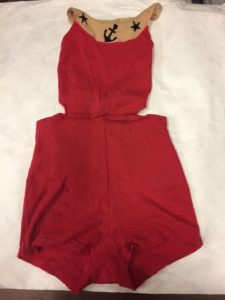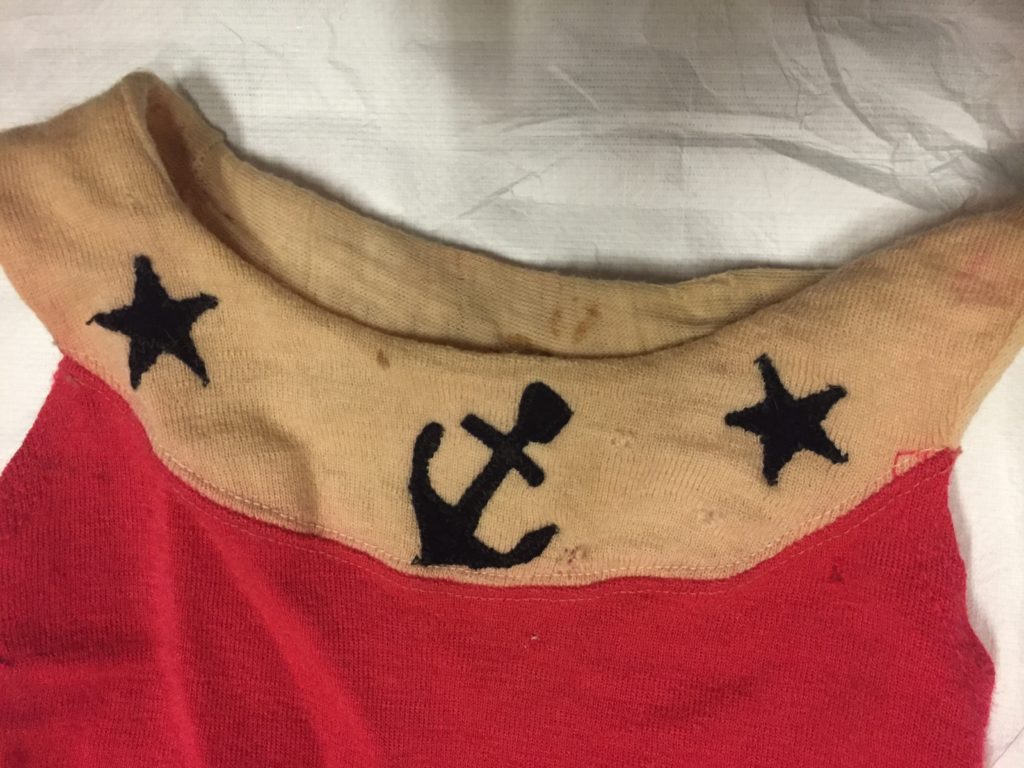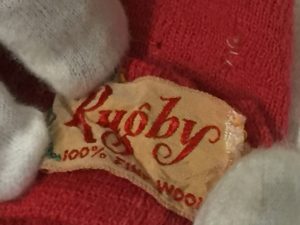The St. Augustine Lighthouse & Maritime Museum houses a large collection that ranges from ship building tools to Fresnel Lenses. Hidden among these objects on a high shelf in a box is a pink, wool bathing suit.
 This iconic piece of woman’s history was designed by the Rugby Company and dates back to the 1930s. The wool swimsuit, called a tank suit, has a scoop neck, low cut bib that has blue stars, and an anchor embroidered on the front. This swimsuit represents a shift in ladies fashion that was not welcome at the time.
This iconic piece of woman’s history was designed by the Rugby Company and dates back to the 1930s. The wool swimsuit, called a tank suit, has a scoop neck, low cut bib that has blue stars, and an anchor embroidered on the front. This swimsuit represents a shift in ladies fashion that was not welcome at the time.
In the beginning of the 19th century respectable women wore wool sailor dresses, bloomers, and stockings to the beach. The wool suits were itchy and when wet it would become heavy which caused the suit to sag and stretch.
By the late 1800s women were ready for a change and wanted to wear more freeing suits similar to what men were wearing. Annette Kellerman, a Vaudeville performer and competitive swimmer from Australia, changed the industry for women`s swimsuits forever with her skin tight onesie which cut off mid-thigh.
Although this style had been accepted in Australia it had not made its way into the United States and in 1907, on a beach in Boston, Kellerman was arrested for indecency. It is the museum’s job to preserve this history.
 As any material ages, it slowly breaks down and begins to deteriorate. The museum practices preventive conservation with all objects by controlling the environments in which they are stored. Temperatures, humidity levels, biological influences, and light levels all need to be monitored and evaluated.
As any material ages, it slowly breaks down and begins to deteriorate. The museum practices preventive conservation with all objects by controlling the environments in which they are stored. Temperatures, humidity levels, biological influences, and light levels all need to be monitored and evaluated.
For example, textiles should be stored at temperatures between 65 and 75 degrees F, and humidity as close to 50% as possible. Higher temperatures can cause brittleness to the textiles, and coupled with high humidity, promote biological activity. Low humidity can also cause brittleness to textiles.
Along that same line, light must be taken into consideration, as it can be a catalyst for deterioration. Damage that is caused by light is cumulative and irreversible.
This post was authored by Flagler College student Rhonda Carroll who interned at the Lighthouse under Collections Manager Barbara Holland. Before completing her internship, “It has been a pleasure to intern here. I took great pride in doing the research for this vintage woman`s wool swim suit.. This is a piece of history that you don’t want to miss!”

